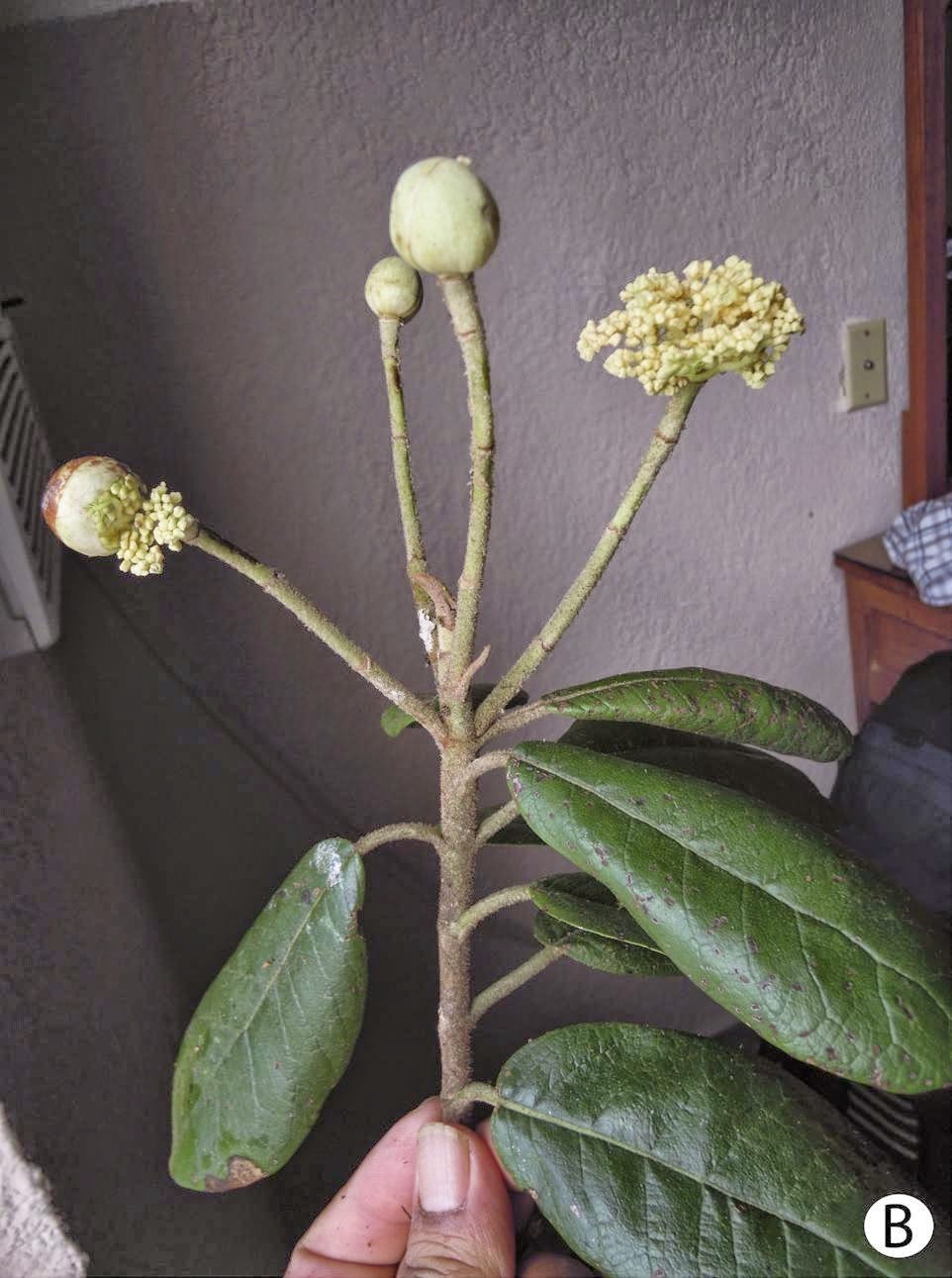Bigonias of the genus Tynanthus
are lianas (woody climbers) found across the Neotropics (tropical areas of
Central and South America), but reaching their maximum diversity in the wet
forests of Amazonas State, and wet Atlantic forests of Brazil.
In a paper published in the journal PhytoKeys on 24 October 2014, Maria Cláudia de Medeiros and Lúcia Lohmann of the Departamento de Botânica at the Universidadede São Paulo describe two new species of Tynanthusfrom
Brazil, discovered during a revision of the genus.
The first new species described is named Tynanthus densiflorus, in reference to its densely packed flowers,
which are white or yellow and produced in August. The species was found growing
only around Manaus in Amazonas State. While the species was found in the
Reserva Florestal Adolpho Ducke, where there was a reasonable population of the
plants, no plants have been found at any great distance from the rapidly
expanding Manaus urban area, and as such de Medeiros and Lohmann suggest that
the species should be considered to be Vulnerable under the terms of the
International Union for the Conservation of Nature’s Red List of Threatened Species until additional studies have been carried out to fully determine the
plant’s conservation status.
Flowering branch of Tynanthus densiflorus. Lilian Procópio in de Madeiros & Lohmann
(2014).
The second new species is named Tynanthus espiritosantensis,
meaning ‘from Espírito Santo’; the species was found growing in wet forests
around Linhares in Espírito Santo State. This species produces white flowers
from December to February, and has distinct bromeliad-like prophylls (leaflets)
around its axillary buds (points at which smaller stems branch of from main
stems).
Flowering branch of Tynanthus espiritosantensis. D.A. Folli in de Madeiros & Lohmann
(2014).
See also…
Hydrangeas are perennial woody plants related to Dogwoods and
Silkleafs. Most species form small shrubs, but some grow to tree sizes,
and there are some lianas (woody vines) in the group. Hydrangeas
are most abundant and diverse in eastern Asia, but they are found as
far west as the Himalayas, and also throughout the Americas. Most Hydrangeas have white flowers, but some species produce pink or blue flowers in
response to changes in soil pH, a trait which has made them popular with
gardeners. As such they have been...
Ox-eye Beans (or Dear-eye Beans, or Hamburger Seeds) are Legumes in the genus Mucuna,
found throughout the tropics. They get their common names from the
three-layered structure of their seeds, which resembles the eye of a
large Mammal (or a hamburger). These seeds are sea-beans; they are
capable of surviving long periods of immersion in sea-water, enabling
them to use ocean currents to colonize new areas; several species of Mucuna are
found in both the American and African tropics. The plants themselves
form woody shrubs or...
Follow Sciency Thoughts on Facebook.




